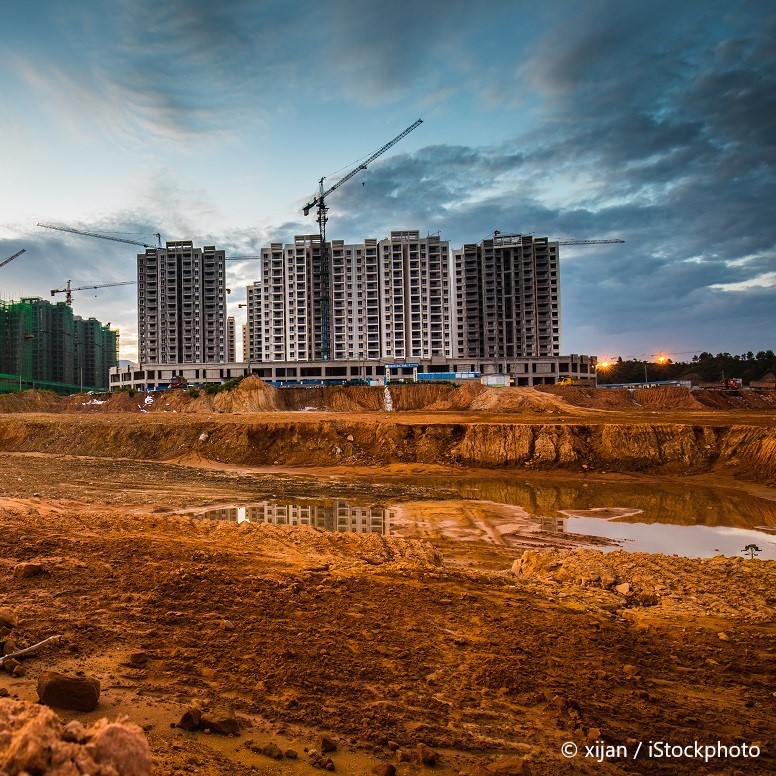20.03.2020
Impact of the coronavirus on construction projects

Real Estate: This blog post deals with the impact of corona on construction sites and highlights both the contractor and the client perspective.
One probably has to assess current and future projects differently. What today may justify, for example, an interference with the basis of transaction (Störung der Geschäftsgrundlage), must be assessed differently for future projects.
Can I still include subcontractors from other European countries in my calculation as a contractor in future? As a client, do I have to accept the risk in connection with corona in order to receive offers? How should the risk be allocated?
From the contractor's point of view, the following applies for ongoing bidding procedures: Ask bidder questions and clarify the allocation of risk before submitting a bid and winning the contract. Also, from the client's point of view, the order of the day is to find a solution based on partnership. Whether a clause concerning reaching mutual agreement is appropriate for a project because the effects cannot yet be foreseen at all, or the risks are so easy to grasp that the risks can be allocated, has to be assessed on a case-by-case basis.
Should bidding periods be extended? Is the current situation a cause for public clients to cancel the contract in ongoing award procedures?
Section 6 of the German Construction Contract Procedures, Part B (Vergabe- und Vertragsordnung für Bauleistungen, Teil B, VOB/B) (Hindrance), Section 313 of the German Civil Code (Bürgerliches Gesetzbuch, BGB) (Interference with the basis of the transaction), clauses of BGB containing rules for compensation of damage or loss - all regulations relevant to the current issues as well as the case law available provide for an assessment and allocation of risk. This means that especially in this area the answer is: “It depends!" Claims can be successfully asserted from the contractor's point of view if the facts of the case are described in concrete terms and it can be made clear that the specific construction site is affected in a way that is no longer commonplace.
From the client's point of view the following applies: General hindrance notifications of the contractor should not be accepted.
The Contractor shall be entitled to an extension of the construction period if his own employees or personnel of the subcontractor working for him are from other European countries and are prevented from continuing work on the construction site as planned due to entry restriction measures. However, this requires that the entry ban actually has a negative impact on the timing of the construction project. This must be presented in each individual case. This also involves questions about the number and role of individuals.
Entry restrictions are not the same as entry bans.
However, the contractor is probably not entitled to an adjustment of the remuneration due to the extension of the construction period. The law provides for an adjustment only if the hindrance lies in the sphere of the client. However, an entry ban as a circumstance hindering the contractor from working is not attributable to the sphere of risk of either party. An interference with the basis of transaction (Störung der Geschäftsgrundlage) should also be ruled out regularly because the equivalence of performance and consideration still exists.
Not every corona-related shortfall of personnel is a hindrance in the sense of Section 6 VOB/B; however, it may be. It all depends on the justification in the individual case. It will also have to be asked whether effects go beyond normal, calculable sickness-related absences and whether the contractor has fulfilled its obligation to ensure a certain degree of redundancy of personnel.
The effects of official measures such as quarantines are more likely to be classified as hindrance, but here too the effects on the specific construction site are of decisive importance. In addition, the contractor will have to be asked whether he has complied with his duty of care to protect his employees.
A (renewed) hindrance notification is required if there is a further disruption of the planned construction process or an aggravation of the circumstances already notified. However, particular caution is needed in with regard to the need of notification concerning the development of hindering circumstances already notified. In case of doubt, the following should apply: in dubio pro (renewed) hindrance notification.
At present, the circumstances do not yet constitute cause for termination. However, this may change depending on further developments. The starting point could then be Section 6 (7) VOB/B, which provides for a right of termination if a disruption lasts longer than three months.
- Leipzig: Stephan Finck
- Köln: Jutta Wittler
- Essen: Achim Meier
- Berlin: Christian Zanner
- Frankfurt: Matthias Wagner

Stephan Finck
Partner
Leipzig
stephan.finck@luther-lawfirm.com
+49 341 5299 24904 / +49 201 9220 0